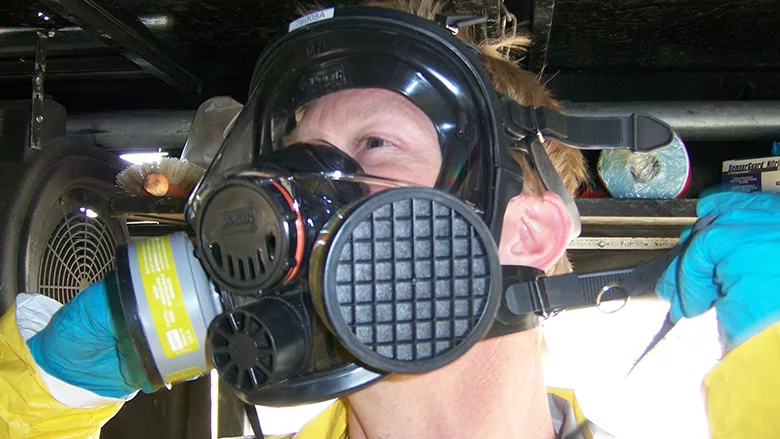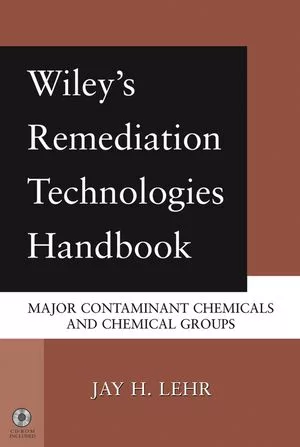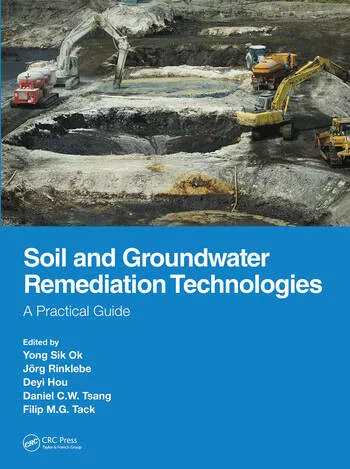Injection 101: What is In Situ Chemical Oxidation and How Does it Work
In situ chemical oxidation is an efficient and cost-effective remediation technology worth considering for groundwater remediation.

Stringent safety protocols are required during ISCO activities. Photo courtesy of Cascade
If you’re new to environmental services, you may not have had many opportunities to utilize in-situ chemical oxidation (ISCO). It’s an efficient and cost-effective remediation technology and definitely worth considering for groundwater remediation.
In this blog post, I’ll cover how ISCO works, what oxidants are used in the process, when to consider using it, and the project components that create a successful result.
What is ISCO?
ISCO is a method of cleaning up groundwater by injecting amendments into the subsurface, where they cause a chemical reaction that destroys the contaminants. The oxidants are typically injected underground via wells or direct push tooling installed at varying depths. Once injected, amendments spread into the groundwater through advection or dispersion where they then mix with contaminants and react.
 Persulfate is just one of four types of amendments typically used in ISCO. Photo courtesy of Cascade
Persulfate is just one of four types of amendments typically used in ISCO. Photo courtesy of Cascade
What type of amendments are used in ISCO?
Oxidants commonly used in remediation are catalyzed hydrogen peroxide (also known as Fenton’s), permanganate, and persulfate. The table below shows a more in-depth look at the characteristics of each one and a description of how they work. While this table doesn’t cover all characteristics of these chemistries, these are the most applicable.

Which oxidants are right for my situation?
Chemical oxidation is particularly effective at remediating chlorinated solvents and petroleum products. When selecting an oxidant for your site, there are numerous things to consider, such as if the injected form makes sense with your targeted lithology and if it’s safe to use on your specific project site.
Before deciding which amendment to use, you should know:
- The oxidation of chromium to hex chrome
- Secondary drinking water standards
- At what time post-remediation will regulators allow you to start monitoring for compliance
- Reaction byproducts that may support additional remediation beyond remediation
A few more important factors to consider when selecting ISCO amendments include:
- The physical form of the amendment should be selected based on lithology, contaminant mass, and injection approach.
- When the contaminant mass is sorbed to soil, chemistry selection and dosing is based on their persistence. It should be determined by the time it takes for sorbed mass to back diffuse into the treated dissolve phase for additional treatment with any remaining oxidant. This will also provide design insight on the number of injection events required to meet groundwater remediation goals.
- Solubility is dependent on dilution water and groundwater temperature.
- Chlorinated ethanes (like TCA) and methanes (like carbon tetrachloride) are destroyed through less understood reducing radicals generated by catalysts, rather than the oxidative pathway.
In addition to the considerations for the oxidants listed above, stringent personal protective equipment (PPE) requirements, equipment and tooling compatibility/change management procedures and site specific job hazard analysis (JHAs) and health and safety programs (HASPs) should be part of the safety planning process when injecting at all sites. These safety requirements are especially important at active gas stations.

What project components determine a successful outcome?
Before beginning an ISCO project, you should know about and plan for several aspects of implementation that are crucial to determining success:
Site Characterization: Understanding how contaminant mass is distributed based on the soil type, geology, lithology, and hydrogeology of the site is key to project design. This allows you to efficiently and cost effectively target your treatment zone and avoid cost overruns associated with less precise treatment. Injection into intervals that don’t require treatment and wasting chemistries or missing the contamination will bring you no closer to meeting your regulatory requirements. In this project, high resolution site characterization (HRSC) was used to optimize an ISCO injection to treat petroleum hydrocarbons. This strategy reduced project costs by almost 25%.
Field application: It’s essential to understand what mixing equipment, pumps, tooling, and injection parameter recordkeeping are being applied to meet design objectives to ensure they are capable of meeting your design specifications.
Logistics: There are some sites without complete access to the treatment area despite efforts to target them with the angle of injection or limited access rigs. In those situations, consideration should be given to other approaches (such as a barrier) to ensure no untreated groundwater makes it to the compliance monitoring well network. Leaving mass untreated negates the treatment already completed.
See how direct ISCO injections via limited access angled sonic rig successfully remediated contaminated soil and groundwater at an active school facility in this case study.
Safety concerns: Workers who handle oxidizing chemicals need to, at all costs, avoid contact with their skin and eyes, prevent inadvertent ingestion, and should not breathe dust or mist. Specific PPE should be identified in JHAs and HASPs and donned whenever in the work zone. When possible, bulk mixing of oxidants should be evaluated as an engineering control to minimize employee exposure during mixing. When working at active gas stations the application of oxidants should be carefully evaluated to ensure zero probability of contact with free product. Also, if there is off-gassing, petroleum vapors will require monitoring to ensure operations are outside explosivity ranges.
For an in-depth look at preparing for an ISCO remediation project, check out The Basics of Planning a Successful In Situ Injection Project. In this webinar, Vice President of Technology Eliot Cooper shares his experience to help environmental professionals avoid surprises during an injection project.
How long does ISCO treatment typically take?
An ISCO project is composed of three phases. The length of each one is impacted by key variables, as detailed below.
Phase 1: Regulatory process
- Approval of work plan and access to the site
- Groundwater treatment standards
- Post-remediation groundwater monitoring required to demonstrate sustainable groundwater reductions
Phase 2: Site characteristics and complexity
- Contaminants and concentrations in soil, soil gas, groundwater and non-aqueous phase liquid (NAPL) phases
- Soil type, such as transmissive and/or fine-grained zones
- Degree of heterogeneity
- Groundwater velocity
- Groundwater geochemistry
Phase 3: Injection
- How long actual injection events take per event
- The estimated number of injection events needed
ISCO is an efficient, proven technology with a variety of oxidants and delivery approaches to meet diverse site conditions. By understanding what ISCO is, what amendments are used in the process, when to use the technology and how to prepare for a successful project, you will be better prepared to take successful action.
If you are thinking of using ISCO on your project, let us know and we can work with you on additional characterization (if needed), full-scale injection and groundwater data performance evaluation.


.webp?height=200&t=1668433096&width=200)



